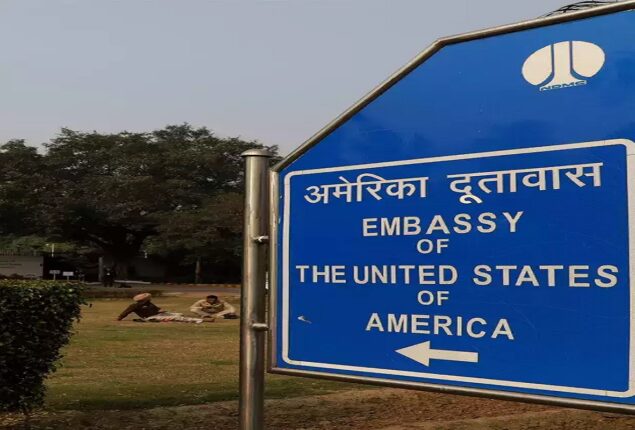PM Modi warns India amid China coronavirus surge
Prime Minister Narendra Modi has asked people to start wearing masks again....

Indians facing 3-year waits for U.S. tourist visas due to disorganized consulates
Hundreds of anonymous posts are posted daily in a Facebook group with 25,000 South Asians seeking U.S. visas.
One user stated, “I need a B1/B2 visa appointment next year.”
Dozens of commenters say “Me too” “Looking for my parents,” “2025 is the earliest.”
According to analysts, the huge stampede is due to record-long wait times for Indian visa applicants.
American consulates in India have months-to-years-long interview wait times. Without a visa, a simple holiday visit can take three years to prepare.
Inaccessibility could hamper Indian immigration to the U.S., warn immigration economists.
Gaurav Khanna, an immigration-focused economics professor at UC San Diego, called the system “broken.” “Covid has kept grandparents from seeing their grandchildren for four years, and now they can’t acquire visas. The Indian diaspora’s welcome in the U.S. is affected. “If my family can’t visit, I don’t think my U.S. life is as rewarding as promised.”
In Chennai and Hyderabad, India, the wait time for a tourist visa interview is 999 days, according to the U.S. State Department. 959 days in Kolkata. Other consulates only accept appointments for emergency tourist visas, which have a lower backlog.
“From a managerial, organizational standpoint, it seems dysfunctional,” Khanna added.
NBC News hasn’t heard from the State Department. Last month, they recognized global wait times.
The State Department is reducing visa interview wait times globally, it said. We’ve doubled our recruiting of U.S.
Foreign Service professionals to conduct this critical work, visa processing is rebounding quicker than expected, and in FY 2023 we plan to reach pre-pandemic visa processing levels.
Julia Gelatt, a senior analyst at the Migration Policy Institute, said travel moratoriums and hiring freezes during the pandemic backlogged thousands of visas. Gelatt said the State Department’s efforts to fix staffing concerns won’t be swift.
Gelatt: “The State Department is tripling hiring and training staff.” It takes time to staff consulates because Americans must learn foreign languages and undergo extensive training.
Khanna doesn’t buy Covid’s answer.
He stated most countries experienced Covid backlogs and staffing concerns. Staffing concerns can indicate disorder.
The U.S. can easily obtain an India visa. Few weeks are needed. Backwards is slow. It displays effective visa-granting mechanisms.”
As consulate backlogs develop and appointments are years away, some take matters into their own hands. Khanna has seen that several South Asian groups give backchannels to early interview times on Facebook and WhatsApp.
Admins of dozens of social media visa groups have encouraged members to direct message them for aid this year.
They reserve upcoming appointments in large numbers, then cancel and sell the spots to desperate passengers, Khanna added.
“That’s another symptom of a broken system,” he remarked. “People can pay a lot to receive a faster appointment from these groups. This worsens the situation. People pay, though.”
Khanna says they’re taking advantage of a lack of transparency in visa processes and obstacles.
Khanna said it adds another costly hurdle for low-income South Asians visiting the U.S.
He remarked, “It’s unfair.” The consulates blame staffing. We haven’t gotten our act together. No excuse.”
Khanna said families will go years without seeing each other and America’s image as a shelter for Indian immigrants could suffer.
“They’re leaving their family on the other side of the planet, so it’s hard for them to visit,” he said. “This goes beyond tourism. It affects where diasporas settle. Do we want to live where our relatives can’t easily visit?
Catch all the World News, Breaking News Event and Latest News Updates on The BOL News
Download The BOL News App to get the Daily News Update & Follow us on Google News.